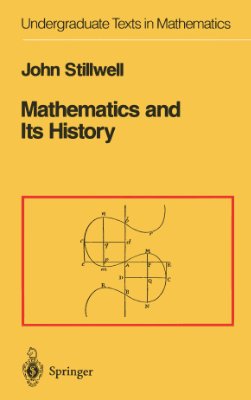Springer, 1989. - 371 Pages.
This book presents a concise unified view of mathematics and its historical development. It is aimed at senior undergraduates - or other mathematicians - who have mastered the basic topics but wish to gain a better grasp of mathematics as a whole. Reasons for the emergence of the main fields of mode mathematics are identified, and connections between them are explained, by tracing the course of a few mathematical themes from ancient times down to the 20th century.
The emphasis is on history as a method for unifying and motivating mathematics, rather than as an end in iteself, and there is more mathematical detail than in other general histories. No historical expertise is assumed, and classical mathematics is rephrased in mode terms whenever it seems desirable. Nevertheless, there are copious references to original sources, and readers wishing to explore the classics for themselves will find it a useful guide.
An advantage of the unified approach is that it ties up loose ends and fills gaps in the standard undergraduate curriculum. Thus, readers can expect to add to their mathematical knowledge as well as gaining a new perspective on what they already know.
This book presents a concise unified view of mathematics and its historical development. It is aimed at senior undergraduates - or other mathematicians - who have mastered the basic topics but wish to gain a better grasp of mathematics as a whole. Reasons for the emergence of the main fields of mode mathematics are identified, and connections between them are explained, by tracing the course of a few mathematical themes from ancient times down to the 20th century.
The emphasis is on history as a method for unifying and motivating mathematics, rather than as an end in iteself, and there is more mathematical detail than in other general histories. No historical expertise is assumed, and classical mathematics is rephrased in mode terms whenever it seems desirable. Nevertheless, there are copious references to original sources, and readers wishing to explore the classics for themselves will find it a useful guide.
An advantage of the unified approach is that it ties up loose ends and fills gaps in the standard undergraduate curriculum. Thus, readers can expect to add to their mathematical knowledge as well as gaining a new perspective on what they already know.

